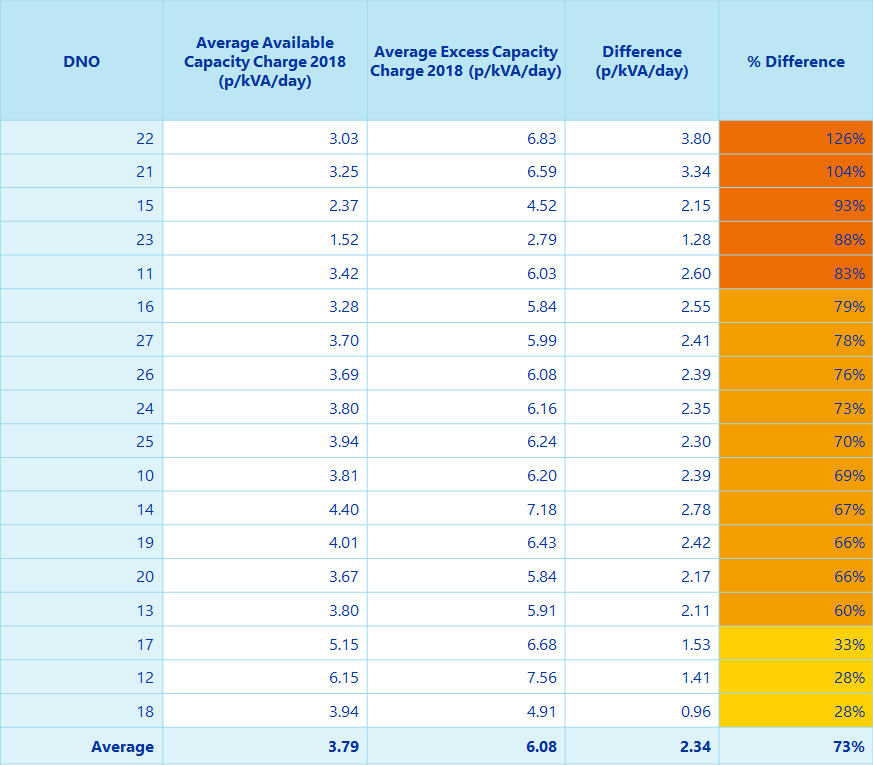
Maximum Import Capacity
Most people will know that every Half-Hourly metered site has a Maximum Import Capacity (MIC). More commonly it’s shown on the bill as Capacity and is charged at either £/kVA/month or p/kVA/day. The bills we’ve seen recently show it falling anywhere between around £0.60/kVA/mth up to as much as £1.70/kVA/mth. Traditionally, exceeding your capacity has only resulted in paying further multiples of this amount, i.e. simply paying for what you’ve used.
So what’s changing?
In less than one months time, you will see yet another new charge on your bill. Following a decision by OFGEM in 2014, DCP161 is being introduced. It is aimed at helping suppliers better manage capacity and therefore taking pressure off the grid. As described above, any excess has so far been proportionate. Going forwards, significant penalty charges will be levied. So far, these are only estimates, however, the table below gives a clear indication of what the impact is likely to be.

What can I do about it?
Reducing energy consumption, although not always a strategic item for most businesses, does feature highly on the to do list. However, in this case, it’s not necessarily about reducing the number of kWh consumed. This focuses solely on the peak demand of a site. Suppliers and brokers are suggesting that you increase your MIC. Even if it is available at all, it’s only a short term fix because you’ll be paying them for that extra capacity forever. You might also have to pay large arrangement fees for obtaining the additional supply as well. There are, however, several ways in which you can reduce this figure to ensure you remain within your existing limit.
- Check that your Power Factor is at least 0.95.
- When do you use the power? Could you shift processes to average that demand out?
- Have you employed controls for lighting and plant so they’re only used when necessary. This may be some form of Demand Response, Load Shedding or a site wide measure such as Voltage Management.
- Localised generation is even better, reducing your dependence on the grid.
- Consider employing a Battery Storage medium, allowing you to do peak-lopping.
It’s not complicated
All of the above falls within our portfolio. We can help you not just for the short term, but going forwards. DCP161 is only one of several increases to happen this year. Capacity Market Levies rise significantly in 2018 and will continue to do so for several years to come. All of these fall under the umbrella of non-commodity charges and these will form an increasingly higher percentage of the costs going forward. Contact us now to find out how we can help.



